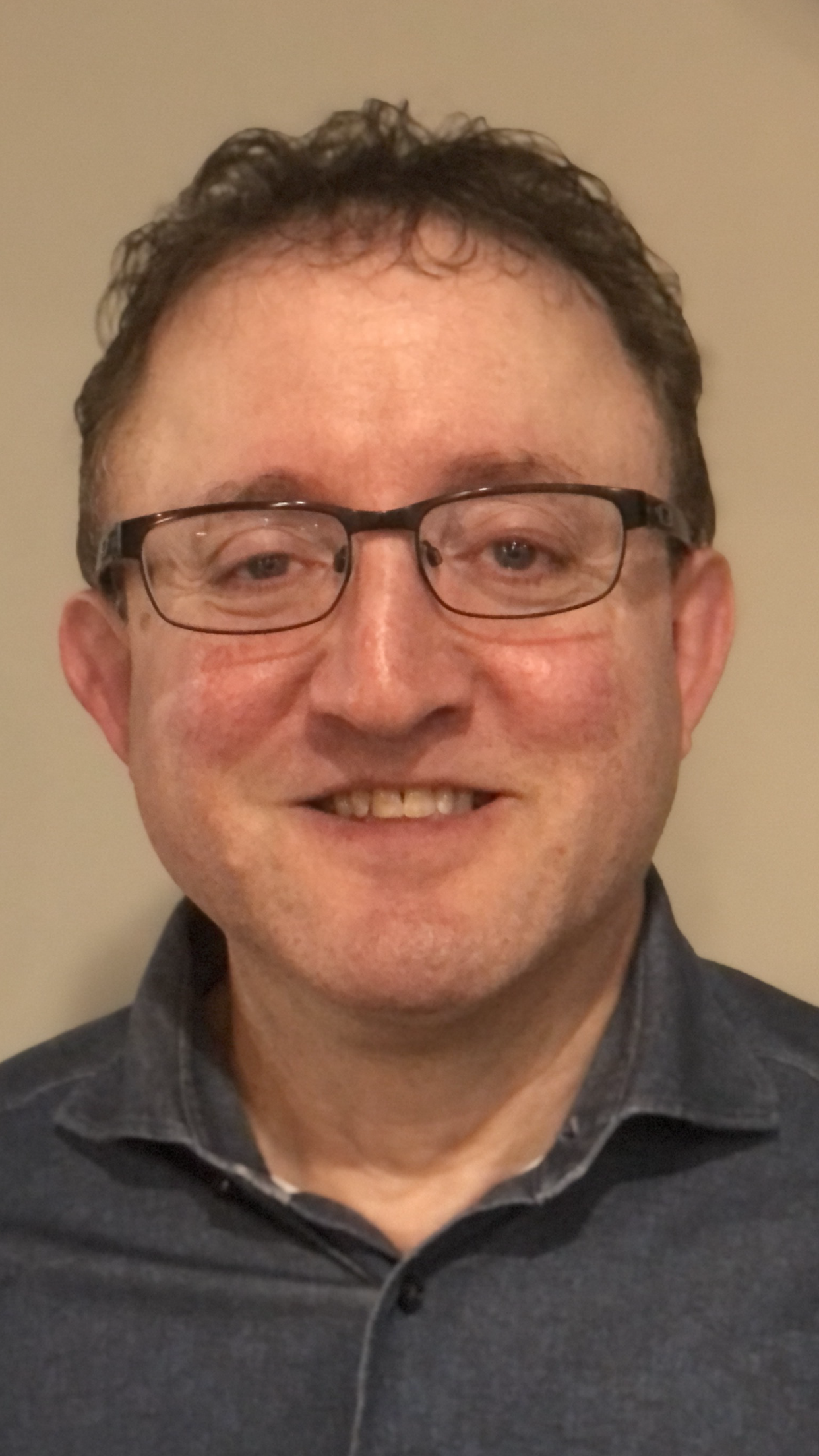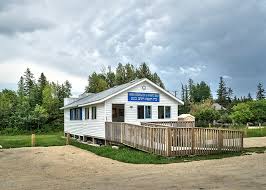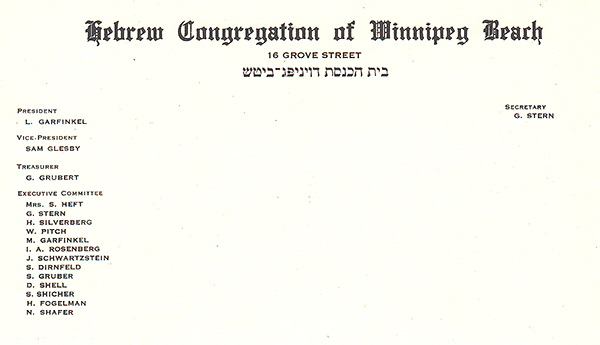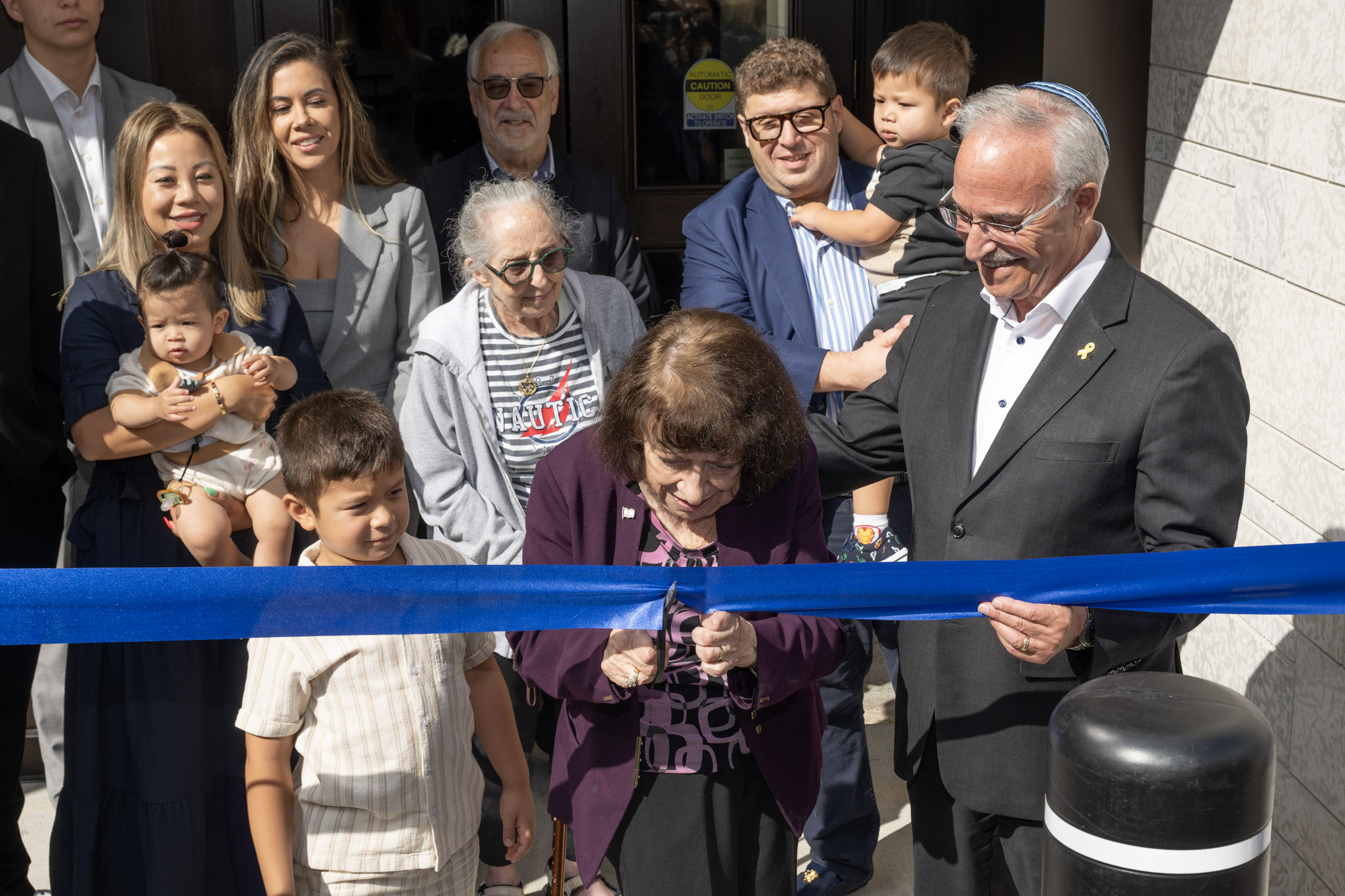Local News
Inspirational Gray Academy teacher Sheppy Coodin retiring

By MYRON LOVE After 20 years at Gray Academy – and 30 years overall as a teacher, Dr. Sheppy Coodin is retiring – leaving behind many indelible memories – not only for himself but also for the numerous students he has taught over the years.
“I tried to inspire my students – and I was in turn inspired by them,” says Coodin, the son of Kayla and the late Fischel Coodin, who was one of the longest serving teachers currently teaching at the school.
The beloved biology teacher’s relationship with our community’s Jewish school system actually goes back much longer than 20 years. He is an alumnus of both the former Talmud Torah School and Joseph Wolinsky Collegiate and his father-in-law, Jerry Cohen, served as principal of Joseph Wolinsky for 17 years – from 1980-1997.
Coodin recounts that his teachers at Joseph Wolinsky – in particular the Grysmans and Binenfelds – inspired his passion for Judaism.
Coodin earned his Ph.D. in Biology from Western University – graduating in 1993. He says though, that his goal all along had been to become a teacher. After Western, he and his late wife, Naomi, returned to Winnipeg where he earned his B. Ed at the University of Manitoba.
He first taught for a year in the Seven Oaks School System – followed by eight years at St. John’s-Ravenscourt. At Ravenscourt, he taught Grade 8-12 Sciences.
Coodin taught at Ravenscourt for eight years before moving to Gray Academy. At the latter, he taught high school Biology and Judaic Studies.
Coodin describes Gray Academy as a very special school. “My colleagues and the students – we are a family,” he observes.
One important trait that Coodin brought to his role as a teacher was his enthusiasm. “I have always loved lesson planning,” he says. “I loved the challenge of finding new ways to help my students connect with the material.
Coodin also has one talent that is unique among his fellow teachers: He can juggle…no, not in the sense of juggling responsibilities – but real juggling. It was an avocation that he learned in high school. In his younger days, he occasionally worked children’s birthday parties as “Sheppy the Clown” – an act that naturally included juggling.
And from his first year as a teacher, he taught interested students to juggle as part of his school’s extracurricular activities. At Gray Academy, he started a yearly Purim variety show which included his student jugglers as well as other students and staff offering stand-up comedy, song and dance.
He happily reports that the variety shows will continue even though he will no longer be a part of them.
Living and modelling an observant Jewish life has also been important to Coodin. For 30 years, Jewish scholar Barry Bender form New York would fly into Winnipeg in January – with a dozen yeshiva students, to lead a weekend Shabbaton for the school’s high school students – a Shabbaton that Coodin was involved in helping organize.
That came to an end with the Covid lockdowns in 2020 but, Coodin reports, last year, he and his fellow teachers organized their own Shabbaton for their students.
“All 14 of us high school teachers who went were actively involved,” he points out.
Another initiative that Coodin started – with fellow Gray Academy High school teacher Avi Posen (who made aliyah in 2019) was the annual “Shabbat Unplugged.” The two created Shabbat Unplugged in 2016 with the idea of building on the annual high school Shabbaton and organizing an annual Shabbaton for Jewish university students, not only from Winnipeg, but also from other Western Canadian Jewish communities.
The Shabbaton is now run by Hillel, he notes. “It was nice to be invited back by (Hillel director) Raya (Margulets),” Coodin commented in an interview with the Post a few months back. “Raya is also a former student of mine who took part in the 2017 Shabbat Unplugged.”
One of the highlights of his teaching career at Gray Academy, he notes, was being able to teach his own sons, Yoni and Elly. “That was really special,” he recalls.
In retirement, he says, he is looking forward to spending time at Gimli over the summer with his partner, Leslie Singer, who is also retiring from teaching this year. “I am planning on renewing my gym membership and getting back to golf,” he continues. “Leslie and I will most likely do some traveling in the fall. I am also looking forward to spending time with family. ”
And though his teaching career is at an end, Coodin fully expects to keep in touch with many of his former students.
Local News
Thank you to the community from the Chesed Shel Emes

We’re delighted to share a major milestone in our Capital Campaign, “Building on our Tradition.” Launched in November 2018, this campaign aimed to replace our outdated facility with a modern space tailored to our unique needs. Our new building is designed with ritual at its core, featuring ample preparation space, Shomer space, and storage, creating a warm and welcoming environment for our community during times of need.
We’re grateful to the nearly 1,000 generous donors who contributed over $4 million towards our new facility. A $750,000 mortgage will be retired in November 2025, completing this monumental project in just seven years.
We’re also thrilled to announce that our Chesed Shel Emes Endowment Fund has grown tenfold, from $15,000 to $150,000, thanks to you, the Jewish Foundation of Manitoba’s FundMatch program, and Million Dollar Match initiative in 2024. Our fund helps ensure that everyone can have a dignified Jewish funeral regardless of financial need.
As we look to the future, our goal remains to ensure the Chevra Kadisha continues to serve our community for generations to come. Our focus now shifts to replenishing our savings account and growing our JFM Endowment fund.
We’re deeply grateful for your support over the past several years.
It’s our privilege to serve our community with care and compassion.
With sincere appreciation,
Campaign cabinet: Hillel Kravetsky, Gerry Pritchard, Stuart Pudavick,
Jack Solomon, and Rena Boroditsky
Murray S. Greenfield, President
Local News
Winnipeg Beach Synagogue about to celebrate 75th anniversary

By BERNIE BELLAN (July 13) In 1950 a group of cottage owners at Winnipeg Beach took it upon themselves to relocate a one-room schoolhouse that was in the Beausejour area to Winnipeg Beach where it became the beach synagogue at the corner of Hazel and Grove.
There it stayed until 1998 when it was moved to its current location at Camp Massad.
On August 2nd members of the synagogue will be holding a 75th anniversary celebration.

As part of the celebration anyone who is a descendant or relative of any of the original members of the first executive committee (as seen in the photo here) is invited to attend the synagogue that morning.
If you are a relative please contact Abe Borzykowski at wpgbeachshule@shaw.ca or aborzykowski@shaw.ca to let Abe know you might be attending or for more information about the 75th anniversary celebration.
We will soon be publishing a story about the history of the beach synagogue, which is something I’ve been writing about for over 25 years.
Local News
Vickar Family cuts ribbon on new Tova Vickar and Family Childcare Centre

By MYRON LOVE In the words of Larry Vickar, the Shaarey Zedek’s successful Dor V’ Dor Campaign “is not only a renewal of the synagogue but truly a renewal movement of Jewish life in our community.”An integral part of that renewal movement was the creation of a daycare centre within the expanded synagogue. On Monday, June 23, Larry and Tova Vickar cut the ribbon, thereby officially opening the Tova Vickar and Family Childcare Centre in the presence of 100 of their family members, friends and other supporters of the project.
The short program preceding the morning ribbon-cutting began with a continental breakfast followed by a welcome by both Fanny Levy, Shaarey Zedek’s Board President, and Executive Director Dr. Rena Secter Elbaze. In Elbaze’s remarks, she noted that Larry and Tova wanted their family (including son Stephen and family, who flew in from Florida) and friends at the event to celebrate the opening of the Tova Vickar and Family Childcare Centre, “not because of the accolades, but because, as Larry put it, he hopes that their investment in the congregation will inspire others to do the same.”
“When Larry and I spoke about what this gift meant to him and the message he wanted people to take away,” she continued, “I couldn’t help but connect it to the teachings of Reb Zalman Schachter-Shalomi whose book – Age-ing to Sage-ing – changes the whole way we look at the concept of ageing and basing it on our ancestral teachings.”
She explained that his concept of “Sage-ing” is based on three key ideas – Discover your meaning and purpose; accept our mortality and think about the legacy you want to leave.
“Larry spoke about these exact concepts when we met,” she said.
Elbaze also noted the presence of Shaarey Zedek’s newly-arrived senior Rabbi Carnie Rose, former Rabbi Alan Green, and area MLAs Mike Moroz and Carla Compton.
Larry Vickar expressed his great appreciation for all those in attendance. “Tova and I are deeply moved to stand here with you today for this important milestone in our community”, he said. “We are grateful to be surrounded by all of you, the people we care about, our family and friends… you who have touched our lives and played some part in our journey.”
